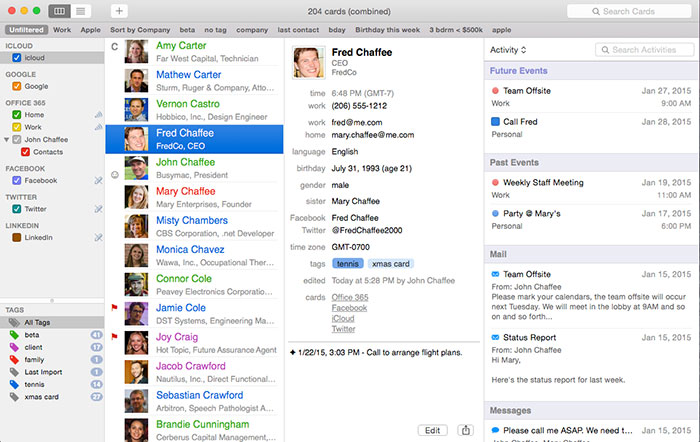


I know it might seem a little pricey at $49.99, but it is way more powerful than Apple’s built-in Contacts app. Step 3 was to get the app Bus圜ontacts for my Mac. Huzzah! There it is! So, what I did was uncheck the boxes for everything except Contacts. Any other iCloud account you sign into can be used for Calendars, Reminders, Notes, Mail, and/or Contacts. That’s the one that will sync your documents, Keychain, Photos, network settings, etc. You can actually sign into multiple iCloud accounts on a single Apple device, but only one of them can be your primary iCloud account. Step 2 was to sign into that iCloud account on my Mac, but not as my primary iCloud account.
Busycontacts google free#
In the end, all I had to do was create a second, free iCloud account (go to to get started) which I would use only to store and sync contacts. Thankfully, those days are far behind us. Every single time changes were made, we would have to go through this. vcf file and emailing it to the other person, who would then have to import those contacts and replace them on her Mac. When I first started working here, it was in the days before iCloud, and I used to share groups of contacts with others by exporting a group as a. It was certainly much easier than the way I used to solve this problem. The way around this problem was easier than I first thought.

How do I share a subset of my Contacts database with someone else? Unlike digital calendars, there’s no way to share just a group of contacts with someone else from a single iCloud account. Reference notes? Easy, thanks to the likes of Evernote, et al. Documents? Easy, thanks to services like Dropbox, etc. Calendars? Easy, thanks to the built-in sharing features of both iCloud and Google Calendar. When you work with other people, there are a number of things that are beneficial to share with the rest of your team (or at least some of them).


 0 kommentar(er)
0 kommentar(er)
